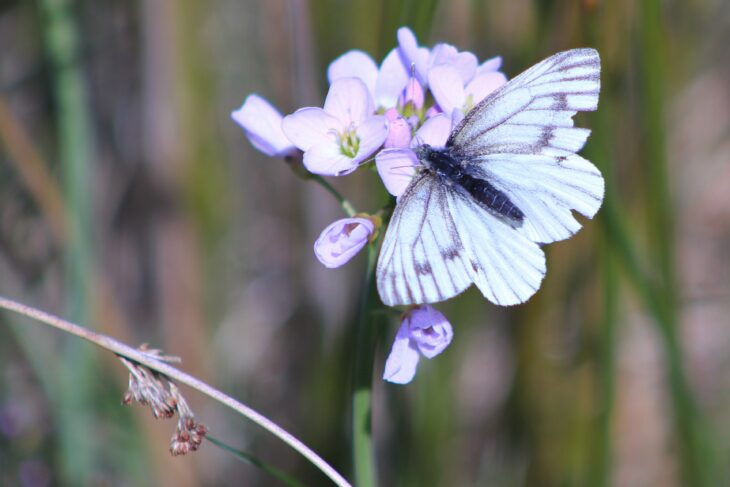Love dust in the air?
,

This week the greenspaces around the town have purred with insects feeding on the wildflowers brought out by the recent warm weather. Bumblebees, hoverflies, craneflies, day-flying moths, they all seemed drunk with the perfume that the bluebells, violets, hawthorn and the rest were pumping out to attract them.
On one walk recently I saw a single, male, green-veined white butterfly zig-zagging between the flowers, feeding on their nectar. Probably building up his strength for the coming courtships he undoubtedly plans. He seemed almost oblivious of me, skirting close by me as he moved between the flowers, so that I could see the dark lined underwings clearly. They remind me of a sketch of a butterfly that’s flown off the page before the artist had time to colour it in.
But colour isn’t that important to green-veined whites. They have a much more potent way of attracting their lovers. Taking a leaf out of the flowers’ book, the male hunts out the female, and when he finds one he flies over her, sprinkling her with a ‘love dust’ (as wildlife experts Thomas and Lewington describe it in their guide to Butterflies of Britain and Ireland) which makes him irresistible. The scent is apparently so strong that even humans can detect the lemon verbena perfume it gives off. The female makes a semblance of resistance, often flying off, but then lands and folds her wings – a signal to the male that she’s smitten. In a final twist the male, while he’s mating with her, smears her with an ANTI-aphrodisiac smell, to put off other suitors. T and L don’t say what that smells of – I’d love to know.
In a way it’s strange that the butterflies should choose the scent of lemon verbena, as their favoured food plants for the caterpillars are from the cabbage family. Once fertilised the female will go in search of plants like garlic mustard or ladies’ smock on which to lay her eggs. But unlike her cousins the small and large whites she’s never developed a taste for cultivated varieties. Our cabbages and sprouts are safe. But if you do catch one in the garden laying its eggs on your honesty, please give it a sniff and let me know.
